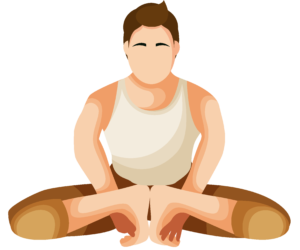Root Lock (Mula Bandha)
Pose Overview
| Common Name | Root Lock |
| Traditional Sanskrit Name | Mula Bandha |
| Sanskrit Name Pronunciation | MOO-la BUND-ha |
| Pose Difficulty | Intermediate |
| Drishti
Drishti is the gaze or visual focus point during yoga poses.
Learn more about Drishti |
Straight ahead or the nose |
Root Lock, or Mula Bandha in Sanskrit, is a yoga technique that is said to be beneficial for promoting balance and focus, as well as for increasing energy and vitality. The name of the technique comes from the fact that it involves "locking" the root of the body, which is said to be located at the base of the spine. The technique is said to be helpful for increasing energy and vitality, and for promoting a sense of balance and focus. It is also said to be beneficial for relieving stress and anxiety, and for promoting a sense of inner peace. Root lock is said to be one of the three main locks in yoga, alongside the diaphragm lock (Uddiyana Bandha) and the throat lock (Jalandhara Bandha).
Benefits of Root Lock
Strengthens the core and pelvic floor muscles Improves focus and concentration Increases blood flow to the pelvis and reproductive organs Helps to regulate the menstrual cycle
How to Enter Root Lock
Start in a seated position with your legs crossed in front of you. Engage your pelvic floor muscles by drawing them upward and inward. Hold the contraction for a few seconds, then release. Repeat this several times, gradually increasing the length of time you hold the contraction each time.
How to Exit Root Lock
Release the contraction of the pelvic floor muscles and rest in a seated position.
Common Root Lock Modifications & Variations
To make the pose more accessible, you can practice the contraction and release of the pelvic floor muscles while lying down. To increase the intensity of the pose, try holding the contraction for longer periods of time or incorporating other postures, such as backbends or inversions, while maintaining the root lock.
Common Mistakes with Root Lock
Pushing too hard or straining the pelvic floor muscles Forgetting to breathe
Safety Guidance
People with pelvic or lower back injuries should avoid this pose or practice it with caution. Pregnant women should also practice with caution and only hold the contraction for a short period of time.

